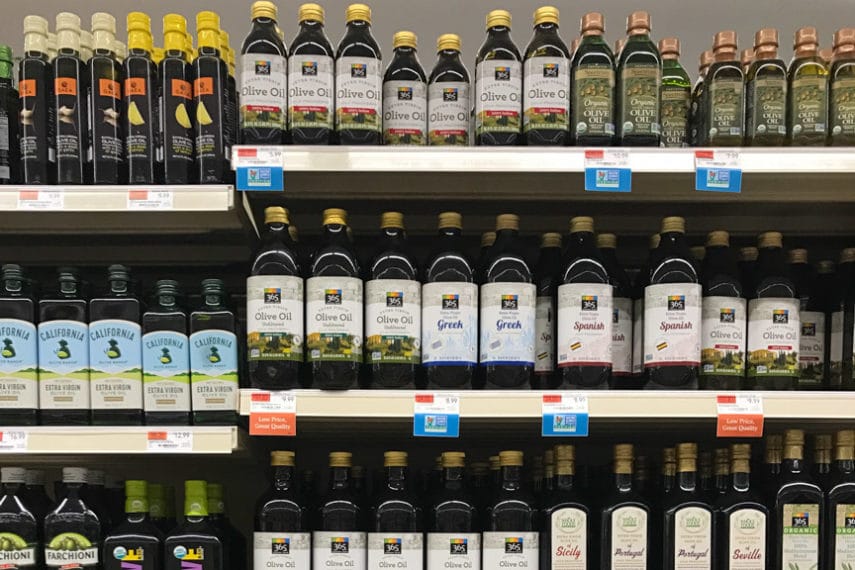About Oil
Monash University recommends you stick with 1 tablespoon (18 g) of oil per serving.
Luckily for us FODMAPers, oils are fats and do not contain FODMAPs, so we have many to choose from. On the Monash University app they list the following kinds as tested, permitted and given the Green Light:
- Avocado oil
- Canola oil
- Coconut oil
- Olive oil, pure, virgin and extra virgin
- Peanut oil
- Rice bran oil
- Sesame oil
- Sunflower oil
- Vegetable oil
How to Buy
Oils can go rancid, so you want to buy fresh and take care with storage. Bottles should preferably be colored to protect quality and the tops should be sealed and affixed tightly. Heat, light and oxygen can damage oils. One sniff of your oil will tell you if it is rancid. They should smell clean and fresh. Any strong musty odors mean it has turned and should be discarded.
You might have a few types of oil in your pantry and want to encourage you to branch out. Just standing in front of a well-stocked store display and you might discover new types that you haven’t tried before. While the list above contains the oils that Monash University has tested, we feel comfortable suggesting to you that you can try others, as oils as a category do not contain FODMAPs. Walnut oil, for instance, is wonderful on salads.
How to Store
Store well sealed in a cool, dark place, like a cupboard – away from the stove. Oils can be refrigerated. If your oils turn cloudy and thicken in the fridge, simply allow to come to room temperature before using.
How to Use
We use our oils every day and keep an assortment in our Test Kitchen. Whether we are creating marinades for meats, whipping up salad dressings, drizzling over risotto or using to stir-fry a high quality oil can improve a dish and add to the gustatory experience.
If you are cooking with high heat, such as deep fat frying or stir-frying, you want an oil with a high smoke point, sometimes called a flash point. This is literally the temperature at which the oil will begin to smoke, producing fumes and harmful free radicals; smoke points vary wildly. Rice bran oil has a very high smoke point (490°F/254°C) and we love it for frying and making popcorn. On the other end of the spectrum, unrefined sunflower oil has a smoke point of only 225°F/107°C and would not be a good choice for frying. Read labels. They might very well list what the smoke points are.


